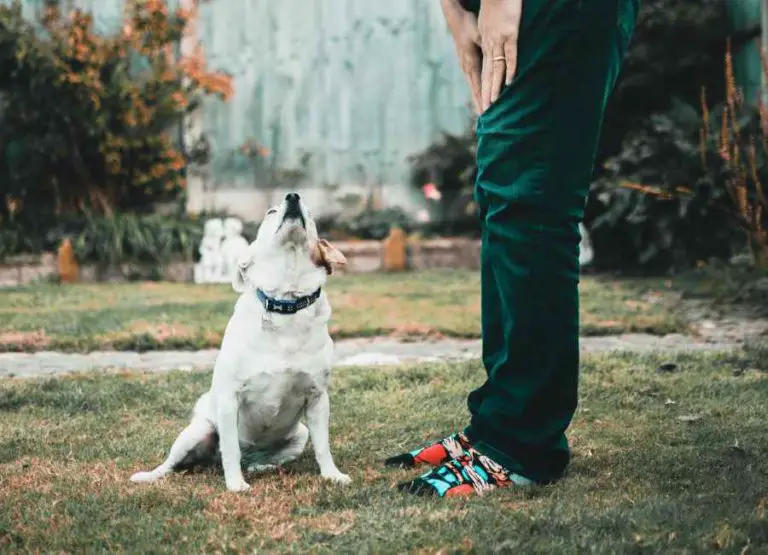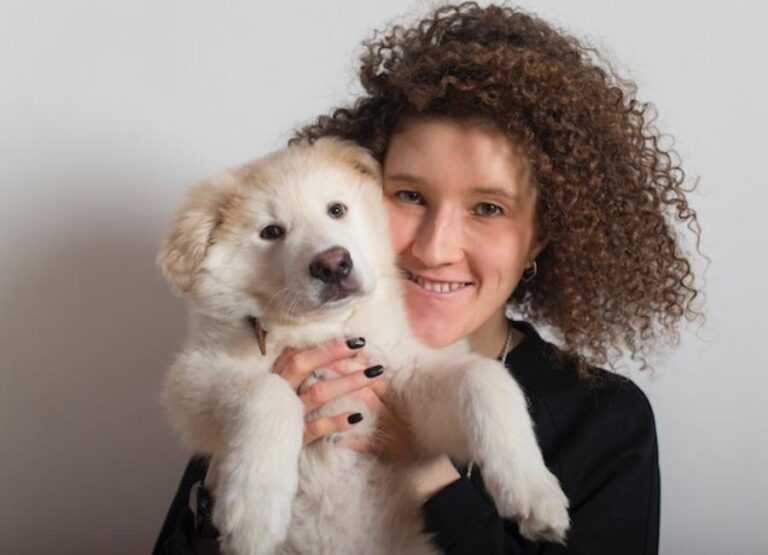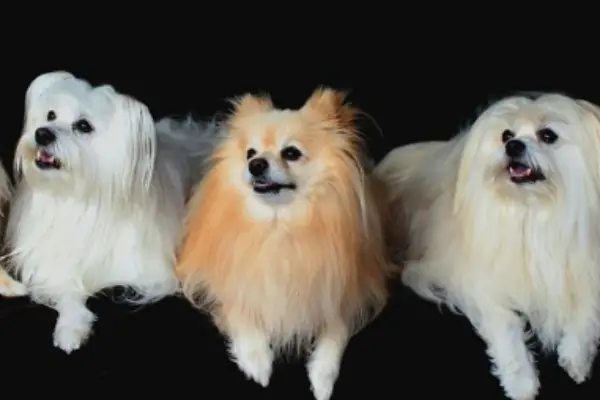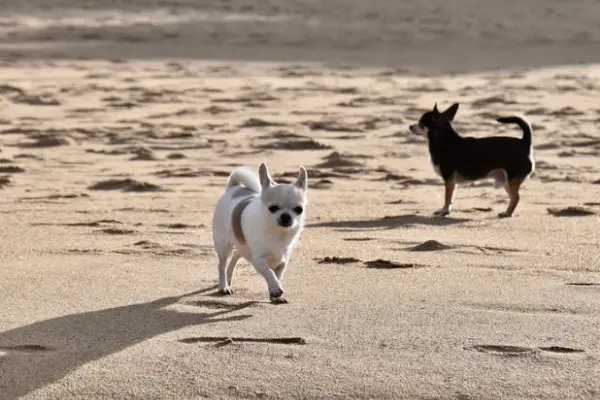Are Beagles Chewers [9 Reasons For Chewing]
![Are Beagles Chewers [9 Reasons For Chewing] Are Beagles Chewers](https://petcreeks.com/wp-content/uploads/2023/05/Are-Beagles-Chewers.jpg)
Are Beagles chewers? Let’s talk about Beagles and their notorious chewing habits.
If you’ve ever owned a Beagle, you know they have an innate talent for turning your favorite shoes into chew toys.
In this post, we’ll explore why Beagles are such enthusiastic chewers and share some tips to help you keep your belongings safe from those adorable, but mischievous, jaws.
Are Beagles Chewers
Yes, Beagles are known to be chewers, beagles have a natural instinct to chew, which can be a result of boredom, anxiety, or lack of exercise.
Providing them with appropriate chew toys and regular exercise can help redirect this behavior.
Training and positive reinforcement can also play a significant role in managing their chewing tendencies.
Reasons Behind Beagles Chewing Behavior
Here are some of the most common reasons behind your beagle chewing behavior:
1. Separation Anxiety
Beagles are known for their affectionate and social nature. They form strong bonds with their human family members and can experience stress and anxiety when left alone for extended periods.
This separation anxiety can manifest as destructive behavior, including excessive chewing.
When a Beagle feels anxious due to separation, chewing provides a form of stress relief and a way to cope with their emotions.
It’s important for Beagle owners to address separation anxiety through training, gradual desensitization to being alone and providing comforting items such as toys or clothing with their owner’s scent.
2. Exploration and Curiosity
Beagles are renowned for their keen sense of smell and natural curiosity. They love to investigate their environment and interact with objects using their mouths.
Chewing serves as a means for them to explore and understand the world around them.
Their inquisitive nature drives them to sample different textures and tastes, leading to instances of inappropriate chewing behavior.
To address this, providing ample opportunities for mental stimulation, interactive toys, and engaging activities can help satisfy their natural curiosity and reduce destructive chewing tendencies.
3. Teething Puppies
During the teething phase, which typically occurs between the ages of 3 to 6 months, Beagle puppies experience discomfort and irritation in their gums as new adult teeth emerge.
Chewing helps alleviate the pain and soreness associated with teething. Owners can support their teething puppies by offering appropriate chew toys designed to soothe sore gums and redirect their chewing instincts away from household items.
It’s crucial to provide a variety of safe and durable chew toys to accommodate their teething needs and prevent destructive chewing habits from forming.
4. Boredom
Beagles are highly energetic and intelligent dogs that thrive on mental and physical stimulation.
When they lack adequate outlets for their energy and mental engagement, they may resort to chewing as a means of alleviating boredom.
Insufficient exercise, lack of interactive playtime, and a shortage of stimulating activities can contribute to boredom-induced chewing.
To combat this, engaging in regular exercise, interactive play sessions, training exercises, and puzzle toys can help channel their energy in productive ways and reduce the likelihood of destructive chewing behavior.
5. Lack of Proper Chew Toys
Beagles are an energetic and curious breed, and they have a natural urge to chew.
When there are no appropriate chew toys available, they may turn to household items like shoes, furniture, or even walls as a way to satisfy their need to chew.
Providing a variety of durable chew toys that are specifically designed for dogs, such as rubber toys, nylon bones, and puzzle toys, can redirect their chewing behavior to more suitable outlets.
6. Hunger
When beagles are feeling hungry or are not getting enough food, they may resort to chewing as a way to alleviate their discomfort.
Ensuring that they are on a regular feeding schedule with an appropriate amount of food for their size and activity level can help address this issue.
Additionally, providing healthy treats and interactive feeding toys can keep them mentally stimulated and satisfied.
7. Natural Instinct
Chewing is a natural behavior for dogs, and beagles are no exception. It’s a way for them to explore their surroundings, relieve stress, and maintain their dental health.
This instinctual behavior can be managed by providing a variety of textures and shapes in their chew toys, as well as engaging them in regular physical exercise and mental stimulation to keep them from becoming bored and resorting to destructive chewing.
8. Medical Issues
Sometimes, excessive chewing can be a sign of an underlying medical problem. Dental issues, such as tooth pain or gum disease, can drive a dog to chew excessively in an attempt to alleviate the discomfort.
Allergies, skin irritations, or digestive problems can also lead to increased chewing as a way to soothe the irritation. Additionally, anxiety and stress can manifest as excessive chewing behavior.
It’s important for pet owners to monitor their beagles’ chewing habits and consult with a veterinarian if they suspect any underlying medical issues contributing to the behavior.
9. Attention-Seeking
Beagles are social animals that thrive on interaction and stimulation. When they feel neglected or under-stimulated, they may resort to chewing as a means of seeking attention.
This behavior can be especially pronounced when beagles are left alone for extended periods or when their need for mental and physical engagement is not being met.
To address attention-seeking chewing, it’s crucial for beagle owners to provide ample opportunities for exercise, play, and mental enrichment.
Engaging in activities such as interactive play, training exercises, and puzzle toys can help satisfy a beagle’s need for attention and reduce their tendency to chew in search of stimulation.
Learn more about how to calm Beagle down.
Managing Beagle Chewing Behavior at Home
Here are some of the most common ways of managing beagle chewing behavior:
1. Provide Appropriate Chew Toys: Beagles have a natural instinct to chew, so having a variety of safe and durable chew toys is crucial. Opt for toys specifically designed for heavy chewers, such as rubber toys or nylon bones. Interactive toys, like puzzle feeders or treat-dispensing toys, can also keep them mentally stimulated while satisfying their urge to chew.
2. Puppy-Proof Your Space: Prevention is key when it comes to managing Beagle chewing behavior. Remove any items that your Beagle might find tempting to chew on, such as shoes, socks, electrical cords, and household items. Keep these items out of reach or in closed cabinets to prevent any mishaps.
3. Regular Exercise:
Beagles are an active breed and require regular physical activity to stay content and well-behaved. Daily walks, runs, or play sessions can help burn off excess energy, reducing the likelihood of destructive chewing out of boredom.
4. Positive Reinforcement: When your Beagle chews on appropriate items, such as their toys, make sure to provide plenty of praise and even small treats. Positive reinforcement helps them understand which behaviors are desirable, reinforcing the habit of chewing on the right things.
5. Supervision and Management: When you’re unable to directly supervise your Beagle, confine them to a safe area, such as a crate or a puppy-proofed room. Alternatively, use baby gates to restrict access to areas with off-limits items. This helps prevent them from developing a taste for forbidden objects and reinforces the habit of chewing on their toys.
6. Bitter Apple Spray: To deter your Beagle from chewing on furniture or other off-limits items, consider using a taste deterrent like bitter apple spray. This spray has a bitter taste that dogs typically find unappealing, discouraging them from chewing on sprayed surfaces. Always test the spray on a small, inconspicuous area first to ensure it doesn’t damage the surface.
7. Training and Mental Stimulation: Engaging your Beagle’s mind through training exercises, obedience training, and interactive games can help alleviate anxiety and boredom. Mental stimulation is key to preventing destructive behaviors, including excessive chewing. Consider activities like hide-and-seek with toys or scent-based games to keep your Beagle’s mind engaged.
8. Address Underlying Issues: If your Beagle’s chewing behavior persists despite your best efforts, it could be a sign of underlying anxiety, stress, or other behavioral issues. In such cases, seeking guidance from a professional dog trainer or behaviorist can help identify and address the root cause of the problem. They can provide tailored strategies to manage your Beagle’s behavior and improve their overall well-being.
Learn more about how to discipline beagle.
Our Recommended Best Chews for Beagles
Here are some of the most recommended best chew toys for Beagles:
- Jomilly Dog Chew Toys for Aggressive Chewers Indestructible Dog Toys Tough Natural Rubber Dumbbell Toy for Small Medium Large Dogs XLarge Blue.
- Askhald Strawberry Dog Toys, Dog Chew Toys for Aggressive Chewers, Indestructible Dog Toys for Boredom, Dog Toys for Aggressive Chewers, Interactive Dog Toys for Small Medium Large Dogs (Strawberry).
- Pacific Pups Products 18 Piece Dog Toy Set with Dog Chew Toys, Rope Toys for Dogs, Plush Toys for Dogs, and Puppy Teething Toys – Supports Non-Profit Dog Rescue.
- Benebone Indestructible Wishbone Dog Chew Toy for Aggressive Chewers, Long Lasting Tough Boredom Breaker for Dogs, Real Peanut Flavour, For Medium Dogs, Made in the USA.
Related Questions
Why do Beagles like to chew so much?
Beagles have a natural instinct to chew, which is common among many dog breeds. Chewing helps them relieve stress, exercise their jaws, and explore their surroundings. It’s important to provide them with appropriate chew toys to satisfy this natural behavior.
How can I prevent my Beagle from chewing on furniture and other household items?
To prevent unwanted chewing, it’s essential to provide your Beagle with plenty of exercise and mental stimulation. Additionally, use positive reinforcement to teach them what they are allowed to chew on and redirect their attention when they chew on something they shouldn’t.
Are there specific toys or chews that are best for Beagles?
Beagles love toys that challenge their minds and keep them engaged, such as puzzle toys and durable chew toys. Look for toys that are designed for strong chewers and always supervise your Beagle when they are playing with new toys.
Is chewing a behavior that Beagles outgrow as they get older?
While some Beagles may reduce their chewing behavior as they mature, many continue to enjoy chewing throughout their lives. Providing appropriate outlets for chewing and training early on can help manage this behavior as they grow.
My Beagle seems to chew more when I’m not around. What can I do?
Separation anxiety can contribute to increased chewing when a Beagle is left alone. Gradually acclimate your Beagle to being alone, provide engaging toys, and consider consulting a professional trainer or behaviorist for guidance.
Are there any health concerns related to excessive chewing in Beagles?
Excessive chewing can lead to dental issues and digestive problems if your Beagle ingests non-food items. It’s important to monitor their chewing habits and provide appropriate supervision to ensure their safety and well-being. Regular dental check-ups are also important for maintaining their oral health.
Conclusion
In conclusion, Beagles are known for their penchant for chewing, but with the right training and environment, their chewing habits can be managed effectively. Remember to provide them with plenty of appropriate chew toys and mental stimulation to prevent destructive chewing. So, embrace the adorable munchers that Beagles are, and enjoy a harmonious life with your four-legged friend!






